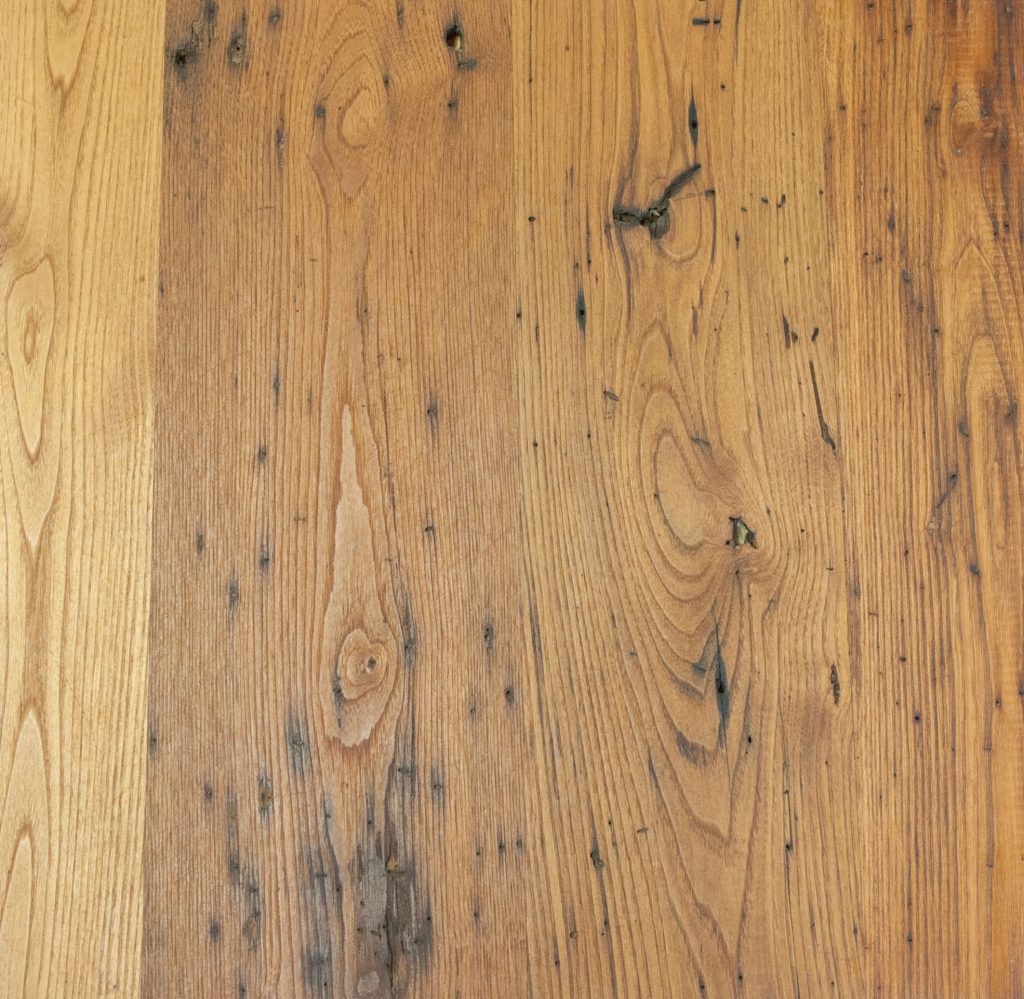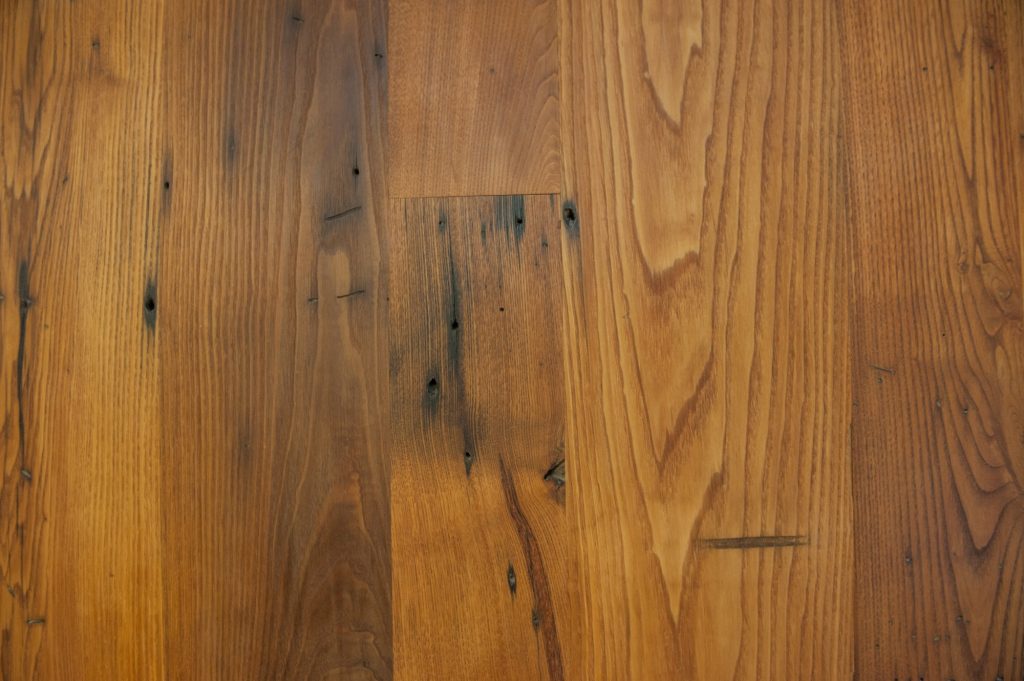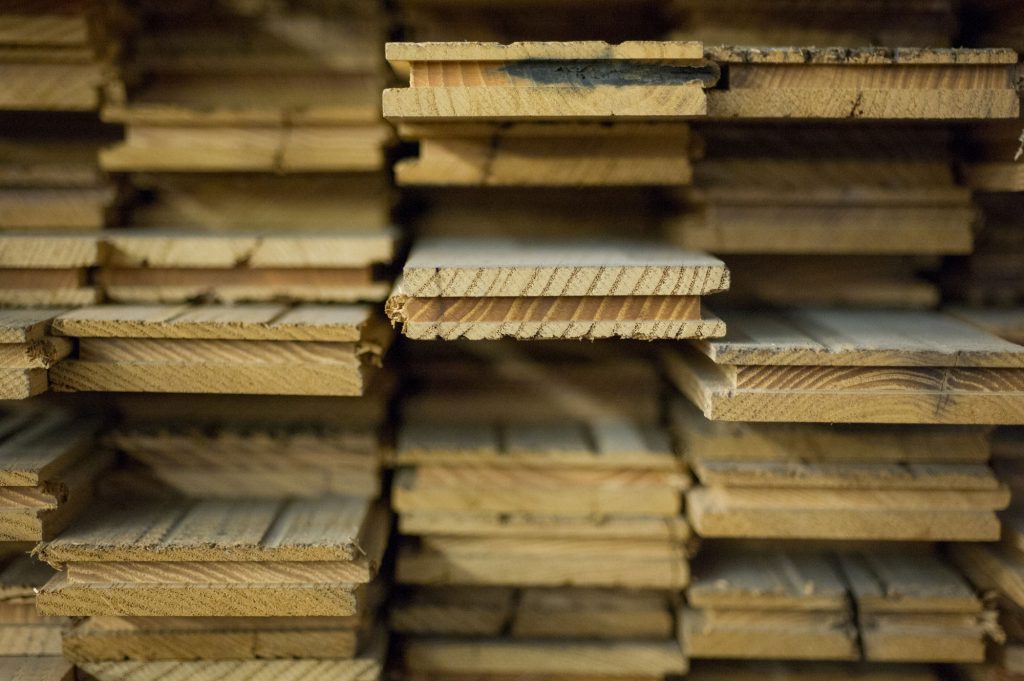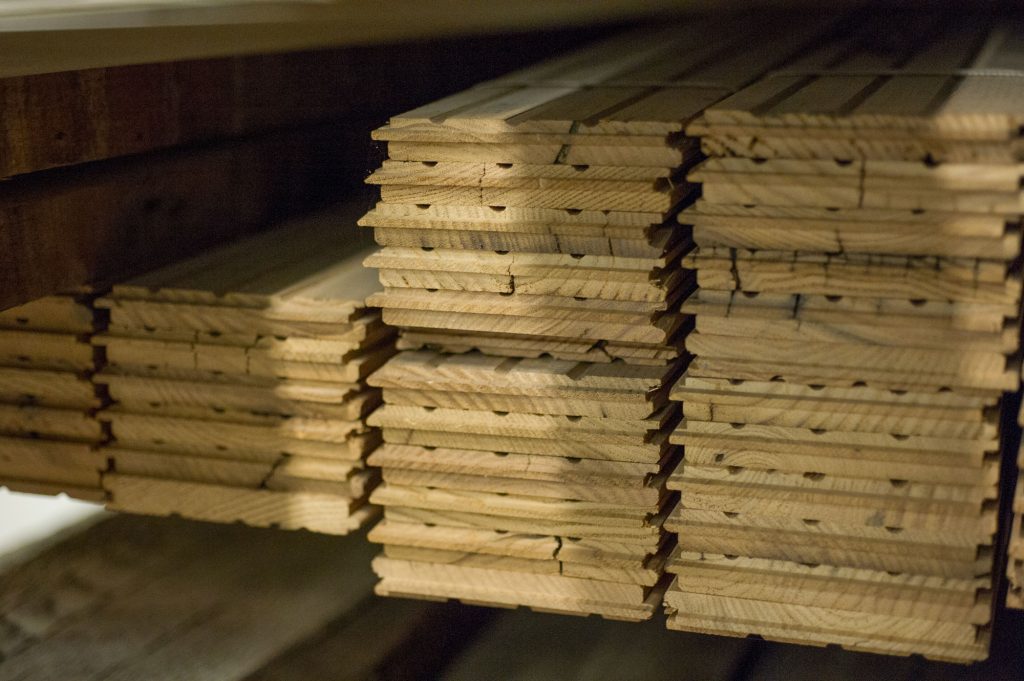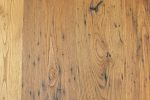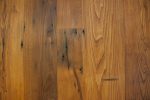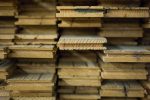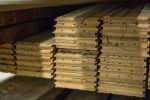Vintage American Chestnut
History and Characteristics of Vintage Distressed Chestnut
The American Chestnut tree was the predominant hardwood species of the entire East coast and into the mid-west forests of the United States. In the early 20th century a devastating blight was introduced from overseas that caused the almost complete extinction of the chestnut species. Today, only a few isolated stands of American chestnut exist in the mid-west. Efforts to re-establish the chestnut tree are the work of the American Chestnut Foundation. Vintage Lumber suggest you visit their web page– httpss://www.acf.org–for additional information.
In its prime, the chestnut tree was highly valued as a food source for livestock as well as for its lumber. As the blight ravaged the species, vast areas of standing deadwood resulted. As deadwood, the standing trunks were very resistant to decay, and became host to several wood boring insects, most notably the “chestnut timber worm–melittomma sericeum.” The resulting tracks of the chestnut timber worm are more commonly known as “shot worm” holes. The shot worm holes are the defining characteristic of “wormy chestnut.” Millions of board feet of standing deadwood chestnut were harvested for industrial, residential, furniture, and construction purposes. The abundance of chestnut considered to be defective resulted in low prices and wide use in the industrial markets, especially as steel mill blocking in the manufacture of hot rolled steel. Thousands of board feet at pennies a board foot were burned daily in steel mills through the 1950’s. While the worm holes were initially considered a “defect’ for most fine woodwork, the boards and beams were extensively used for structural and utility purposes. As the stands of deadwood were harvested, the value of the unique beauty and work-ability of the “functionally extinct” chestnut became established and continues to grow. Today’s source of chestnut is principally deconstructed old barns and occasional commercial buildings built from about 1910 to 1940.
- Reclaiming from industrial, residential, and agrarian sources, Vintage Lumber goes out of its way to source vintage distressed chestnut lumber to produce our high quality flooring and associated products. Vintage Distressed Chestnut flooring is a blend of boards resawn from old beams and boards originally used as siding, sheathing and flooring.
- Reclaimed chestnut contains many exceptional qualities including work ability, distinct worm holes, and varied grain patterns, with warm color tones (light browns to darker highlights from the patina of age).
- Character marks of its history include sound stress/drying cracks, knots, stains, nail holes, and worm holes. The relatively soft density of chestnut limits its desirability as a floor in high traffic areas.
Specifications
- Reclaimed solid wood flooring is normally milled to 17mm thickness (same top wear layer above the T&G as 3/4”, with a thinner bottom layer to maximize yield from scarce supplies of raw material).
- Vintage Lumber is also able to meet customer’s requirements for both thinner (minimum 3/8”) and thicker solid flooring.
- Most of our solid flooring is produced in random widths(RW) from 2” to 10”, on the full inch face. Typical RW ranges are 3” to 6”(3,4,5,6), 3” to 8”, 7” to 10”, or any combination needed. Board widths of over 20” are sometimes available in certain species. The wider the widths required, the higher the costs. Our RW flooring is usually not sold as a repeating pattern(equal lineal feet of each width). For prompt filling of orders, we base our RW counts on available widths in inventory, and we calculate a 9 or 10 board width sequence to facilitate installation to avoid all of one width remaining at the end.
In-stock
Vintage American Chestnut price per Square Foot and Quantity Available- 2-1/4"-$9.39 / 1120 sq ft
- 3"-6"-$13.39 / 4,028 sq ft
